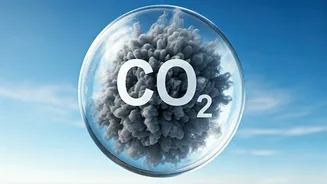Record CO2 Levels
The concentration of carbon dioxide in the Earth's atmosphere has alarmingly climbed to 424 PPM. This figure is significant because it represents a substantial
increase in greenhouse gases, primarily due to human activities such as burning fossil fuels and deforestation. The rise in CO2 levels directly contributes to global warming. Scientists have determined that this current reading indicates the most significant annual jump ever documented. The surge reinforces the urgency of addressing emissions to prevent more severe climate impacts. The continual rise emphasizes that more aggressive measures are necessary to mitigate the effects of global warming and promote environmental sustainability on a global scale.
Biggest Yearly Jump
Data reveals that the yearly jump in atmospheric CO2 is the highest observed to date. The rapid increase is a stark warning. The yearly climb in CO2 is a direct outcome of intensified emissions from different sources, including industrial processes and energy production. This unprecedented increase highlights a clear need for immediate actions to curtail emissions and transition to cleaner energy sources. Ignoring this data could lead to irreversible climate damage. The current trend serves as a strong reminder of the importance of global collaboration and adopting environmentally conscious strategies to achieve a stable climate future. This requires both governmental policies and individual actions.
Impact and Implications
The rising CO2 levels have broad implications for the planet, including more frequent and intense heat waves, altered weather patterns, and rising sea levels. These changes impact ecosystems, threaten biodiversity, and pose challenges for human societies. The continued escalation of CO2 exacerbates these effects. Mitigating the consequences requires proactive measures, such as reducing emissions, improving energy efficiency, and promoting renewable energy sources. This also involves adaptation strategies. Efforts must focus on developing climate-resilient infrastructure. The need for coordinated global action has become more critical. It is essential to transition towards a sustainable, low-carbon future to minimize the adverse impacts of rising CO2 levels.













